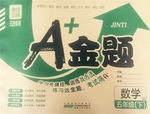题目内容
It is difficult for doctors to help a person with a damaged brain. Without enough blood, the brain lives for only three to five minutes. More often the doctors can’t fix the damage. Sometimes they are afraid to try something to help because it is dangerous to work on the brain. The doctors might make the person worse if he operates on the brain.
Dr. Robert White, a famous professor and doctor, thinks he knows a way to help. He thinks doctors should make the brain very cold. If it is very cold, the brain can live without blood for 30 minutes. This gives the doctor a longer time to do something for the brain.
Dr. White tried his idea on 13 monkeys. First he taught them to do different jobs, then he operated on them. He made the monkeys’ blood back to the monkeys’ brains. When the brain’s temperature was 10℃, Dr. White stopped the blood to the brain. After 30 minutes he turned the blood back on. He warmed the blood again. After their operations the monkeys were like they had been before. They were healthy and busy. Each one could still do the jobs the doctor had taught them.
The biggest difficulty in operating on the damaged brain is that .
A. the time is too short for doctors B. the patients are often too nervous
C. the damage is extremely hard to fix D. the blood-cooling machine might break down
The brain operation was made possible mainly by .
A. taking the blood out of the brain B. trying the operation on monkeys first
C. having the blood go through a machine D. lowering the brain’s temperature
With Dr. White’s new idea, the operation on the damaged brain .
A. can last as long as 30 minutes B. can keep the brain’s blood warm
C. can keep the patient’s brain healthy D. can help monkeys do different jobs
What is the right order of the steps in the operations?
a. send the cooled back to the brain b. stop the blood to the brain
c. have the blood cooled down d. operate on the brain
A. a, b, c, d B. c, a, b, d C. c, b, d, a D. b, c, d, a
Which of the following is not true?
A. If there isn’t enough blood, the brain can live for only three to five minutes.
B. If the brain is very cold, it can live without blood for half an hour.
C. Dr. White tried his idea for thirteen times.
D. After their operations, the monkeys were healthy and busy again.
【小题1】A
【小题1】D
【小题1】A
【小题1】B
【小题1】C
解析:
略

 A加金题 系列答案
A加金题 系列答案 全优测试卷系列答案
全优测试卷系列答案